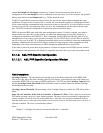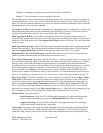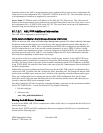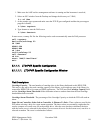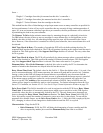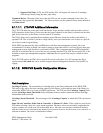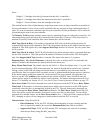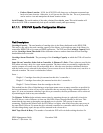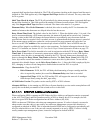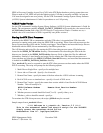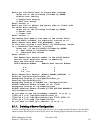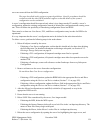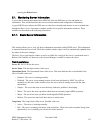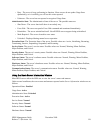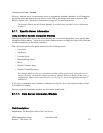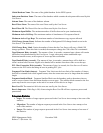requested shelf tape has been checked-in. The PVR will continue checking at this interval until the tape is
checked-in. This field applies only if the Support Shelf Tape checkbox is selected. The retry value must
be 30 or greater.
Shelf Tape Check-In Alarm. The PVR will periodically log alarm messages when a requested shelf tape
has not been checked-in. This field specifies the number of minutes between alarms. This field applies
only if the Support Shelf Tape checkbox is selected. The alarm value must be 2 or greater.
Dismount Delay. When Defer Dismounts is checked, this value is used by the PVL to determine the
number of minutes that dismounts are delayed after the last data access.
Retry Mount Time Limit. The default value for this field is -1. When the default value (-1) is used, if an
error is encountered during a PVR mount operation, the mount will pend and be retried every 5 minutes.
Setting a value in this field will change the mount behavior to periodically retry the mount until the
specified time limit is exceeded. Once exceeded, an error is generated and the mount request is canceled.
If the mount request would have resulted in a write operation, the error returned will cause the Core
Server to set the VV Condition of the associated tape volume to DOWN. Once in DOWN state, the
volume will no longer be available for read or write operations. For further information about the Core
Server VV Condition, see Section 4.5.4.2: Core Server Tape Volume Information Window on page 271.
Drive Error Limit. This field is intended to be used in conjunction with the PVR Server Retry Mount
Time Limit. If the number of consecutive mount errors which occur to any drive in this PVR equal or
exceed this value, the drive is automatically locked by the PVL. The only mount errors that apply are
those set through the Retry Mount Time Limit mechanism. The Drive Error Count field in the PVL
Drive Information records the number of consecutive errors on a drive by drive basis. To turn off the
automatic drive disable feature, set the Drive Error Limit to 0 or -1. Since this field is employed by the
PVL, changing its value will not change drive disable behavior until the PVL is recycled.
Characteristics. Flags for the PVR:
• Defer Dismounts. If ON, the PVL will delay the dismounting of a tape cartridge until the
drive is required by another job or until the Dismount Delay time limit is exceeded.
• Support Shelf Tape. If ON, the PVR and the PVL will support the removal of cartridges
from the tape library using the shelf_tape utility.
ACSLS Packet Version. The packet version used by STK’s ACSLS software.
Alternate SSI Port. A site running two SSI (Server System Interface) services on the same platform will
specify the non-default port number of the second service via this field.
5.1.1.1.1. STK PVR Additional Information
When configuring HPSS to manage an STK Robot, the Drive Address configuration entries correspond
to the ACS, Unit, Panel, and Drive number used by ACSLS to identify drives. For example, the first
drive in a typical STK Robot configuration has the Drive Address (0,0,10,0).
HPSS can share an STK Robot with other tape management systems. If a robot is shared, care must be
taken to make sure that a drive is not used by any other tape management system while that drive is
configured as unlocked in HPSS. This is important because HPSS can be configured to periodically poll
all of its unlocked drives even if they are not currently mounted or in use by HPSS. If a drive is being
used by another tape management system, it must be configured as locked in HPSS.
HPSS Management Guide November 2009
Release 7.3 (Revision 1.0) 121



